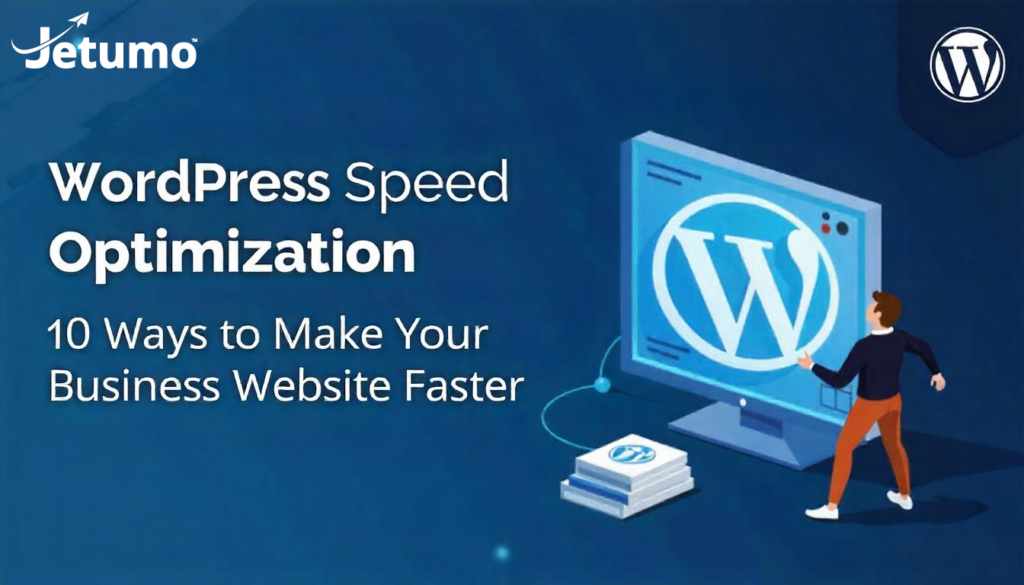Your website’s performance directly impacts your business success, but conducting a website audit shouldn’t require a computer science degree. Whether your site is running slow, experiencing downtime, or simply not performing as well as it should, this comprehensive website performance audit checklist will help you conduct a website audit systematically to identify problems and find solutions across any platform.
Website audits don’t discriminate between platforms – WordPress sites, Drupal applications, Joomla websites, and custom platforms all face similar performance challenges. The key is knowing what to audit and understanding when issues stem from your hosting environment versus your website configuration. This step-by-step checklist ensures you audit every critical aspect of your site’s performance.
Understanding Website Audits and Performance Fundamentals
Before diving into specific audit steps, it’s important to understand what website audits actually measure and how different types of website audits help diagnose various performance issues.
What Website Audits Actually Measure
Core Performance Metrics in Your Audit:
- Page load times (should be under 3 seconds)
- Time to First Byte (TTFB) from your web server
- Core Web Vitals scores for user experience
- Mobile performance and responsiveness
- Server uptime and reliability
Business Impact Indicators:
- Bounce rates and user engagement
- Conversion rates and lead generation
- Search engine rankings and visibility
- Customer satisfaction and retention
Understanding website performance monitoring helps you connect technical audit findings to business outcomes. Regular website audits help ensure your site continues supporting your business goals effectively.
Types of Website Audits for Performance Analysis
Different audit approaches help identify specific performance issues that affect how users interact with your website.
Technical Performance Audit: A technical audit examines server-side factors, hosting quality, and infrastructure elements that impact your site’s performance. This type of audit helps identify hosting-related issues that affect overall performance.
SEO Performance Audit: An SEO audit focuses on how search engines understand your content and how technical performance affects search rankings. Search engine optimization and site speed are closely connected in modern SEO practices.
User Experience Audit: A UX audit evaluates how users interact with your site and identifies performance barriers that affect user experience. This audit helps optimize your website for better engagement and conversion rates.
Pre-Audit Preparation: Setting Up Your Website Audit
Essential Audit Tools for Comprehensive Website Analysis
Free Website Audit Tools:
- Google PageSpeed Insights for Core Web Vitals analysis
- Google Search Console for SEO performance data
- Google Analytics for user experience metrics
- GTmetrix for detailed performance breakdowns
Professional Audit Tools: Many audit tools offer advanced features for comprehensive website audits. Tool selection depends on the size of your website and the depth of analysis needed for your audit process.
Built-in Hosting Analysis Tools: Many hosting providers offer performance monitoring dashboards. Check if your web hosting service includes analytics tools that show server performance metrics and resource usage patterns during your audit.
Establishing Audit Baselines
Current Performance Documentation: Before conducting a website audit, document your current performance metrics across different pages and user scenarios. This baseline helps you measure improvement and identify when changes negatively impact performance.
Competitive Audit Analysis: Test competitor websites in your industry to understand performance expectations. This context helps determine whether your audit findings indicate critical issues or minor optimization opportunities.
Traffic Pattern Analysis: Understanding when your website experiences peak traffic helps identify whether performance issues relate to server capacity or fundamental optimization problems discovered during your audit.
Core Website Performance Audit Checklist
Server and Hosting Performance Analysis
Step 1: Conduct a Website Server Response Audit
Your web server response time directly affects all other performance metrics. This critical part of your audit examines how your hosting environment impacts site performance.
What to Audit:
- TTFB should be under 200ms for optimal performance
- Consistent response times across multiple test runs
- Geographic performance variations if you serve global audiences
- Server uptime patterns and reliability metrics
Common Issues Your Audit May Reveal:
- Overcrowded shared hosting causing slow server responses
- Outdated web server software affecting performance
- Database optimization needs on your hosting environment
- Insufficient server resources for your website’s requirements
If your website keeps crashing or experiencing stability issues, a comprehensive audit often reveals server-side problems as the root cause.
Step 2: Hosting Environment Technical Audit
Hosting Technology Audit Points:
- Storage type (NVMe, SSD, or traditional HDD)
- Web server software (OpenLiteSpeed, Apache, Nginx)
- PHP version and configuration optimization
- Database server performance and optimization
Our analysis of NVMe hosting benefits shows how storage technology directly impacts website performance across all platforms. Include storage analysis in every technical audit.
Resource Usage Audit:
- CPU usage patterns during peak traffic
- Memory allocation and usage efficiency
- Bandwidth utilization and transfer limits
- Storage space availability and optimization
Platform-Specific Performance Audit
Step 3: WordPress Performance Audit Checklist
WordPress-specific website audits often reveal performance issues from plugin conflicts, theme optimization problems, or database inefficiencies.
WordPress Speed Optimization Audit:
- Plugin performance impact analysis
- Theme code quality and optimization review
- Database cleanup and optimization needs
- WordPress cache configuration effectiveness
Understanding WordPress performance optimization provides comprehensive strategies for addressing audit findings in WordPress sites.
WordPress-Specific Audit Steps:
- Plugin conflict testing using staging environments
- Theme performance analysis with different content types
- Database query optimization opportunities
- WordPress core update impact on performance
Learn comprehensive WordPress troubleshooting strategies for addressing performance and functionality issues discovered during your audit.
Step 4: Multi-Platform Performance Audit
For businesses using multiple content management systems or custom applications, platform-agnostic audit techniques help identify common issues across different technologies.
Universal Performance Audit Factors:
- Image optimization across all platforms
- CSS and JavaScript minification opportunities
- Content delivery network (CDN) implementation
- Mobile performance optimization needs
Platform Comparison Audit: If you’re considering platform migration, performance audit results help compare how different content management systems handle your specific content and traffic patterns.
Content and Resource Optimization Audit
Step 5: Image and Media Performance Audit
Images and media files typically account for the largest portion of website loading time across all platforms. Your content audit should prioritize media optimization.
Image Optimization Audit Checklist:
- File size analysis and compression opportunities
- Image format optimization (WebP, AVIF adoption)
- Lazy loading implementation effectiveness
- Responsive image delivery for different devices
Media Performance Audit Impact:
- Video loading strategies and optimization
- Audio file compression and delivery methods
- Document and download file optimization
- Third-party media embedding performance impact
Step 6: Code and Script Performance Audit
Website code quality directly affects loading times and user experience across all platforms. This technical audit component examines front-end and back-end optimization opportunities.
Front-End Performance Audit:
- CSS file size and optimization opportunities
- JavaScript loading strategies and minification
- Third-party script impact on performance
- Critical rendering path optimization
Backend Performance Audit Considerations:
- Database query efficiency and optimization
- Server-side caching implementation
- API response times and optimization
- Custom code performance analysis
Advanced Website Audit Techniques
SEO Performance Audit Integration
Step 7: SEO Audit for Performance Impact
Search engine optimization and website performance are interconnected. Your SEO audit should examine how performance affects search rankings and visibility.
SEO Performance Audit Points:
- Core Web Vitals impact on search rankings
- Page speed as a ranking factor analysis
- Mobile-first indexing performance requirements
- Technical SEO elements affecting performance
On-Page SEO Audit for Performance:
- Content loading optimization for better indexing
- Internal linking structure efficiency
- Meta data optimization impact on loading
- Schema markup implementation performance
Understanding technical SEO fundamentals helps ensure your audit addresses both performance and search engine optimization needs.
Step 8: Content Audit for Performance Optimization
Content quality and organization directly affect user experience and site performance. Your content audit should evaluate both quality and technical performance aspects.
Content Performance Audit:
- Content loading speed and optimization
- Image-to-text ratio optimization
- Content hierarchy and navigation efficiency
- User engagement with different content types
Content Quality Audit Elements:
- Content relevance and user value assessment
- Content freshness and update requirements
- Duplicate content identification and resolution
- Content accessibility and usability evaluation
Database Performance Audit
Step 9: Database Optimization Audit
Database performance affects all dynamic websites, regardless of platform. Poor database optimization can cause significant performance issues even with excellent hosting infrastructure.
Database Performance Audit Indicators:
- Query execution time analysis
- Database size and optimization opportunities
- Index usage and optimization needs
- Connection pooling and optimization
Understanding WordPress database optimization provides platform-specific guidance that applies to other content management systems during your audit process.
Database Audit Diagnostic Steps:
- Slow query identification and analysis
- Database table optimization opportunities
- Unused data cleanup and maintenance
- Database backup impact on performance
Caching and CDN Performance Audit
Step 10: Caching Strategy Audit
Effective caching dramatically improves website performance across all platforms and hosting environments. Your audit should thoroughly examine caching implementation.
Caching Performance Audit:
- Browser caching configuration effectiveness
- Server-side caching implementation analysis
- Content delivery network performance impact
- Cache invalidation strategy optimization
Learn about WordPress cache plugin options and how different caching strategies affect performance across various platforms during your audit.
CDN Performance Audit Assessment:
- Geographic performance improvement analysis
- CDN cache hit rates and optimization
- Static resource delivery efficiency
- CDN cost-benefit analysis for your traffic patterns
Security Impact Audit on Performance
Security-Performance Balance Audit
Step 11: Security Impact Performance Audit
Security measures can impact website performance, but proper implementation minimizes performance costs while maintaining protection. Your audit should examine this balance.
Security Performance Audit:
- SSL certificate implementation efficiency
- Firewall and security plugin performance impact
- Malware scanning and security monitoring overhead
- Backup system performance considerations
Our website security checklist includes performance considerations for security implementations that should be part of every comprehensive audit.
Security-Related Performance Audit Issues:
- Over-aggressive security plugins causing slowdowns
- SSL configuration optimization opportunities
- Security scan scheduling optimization
- Backup timing and performance impact management
Mobile Performance Audit Considerations
Mobile-Specific Performance Audit
Step 12: Mobile Performance Audit Checklist
Mobile performance requires specific audit approaches since mobile users often experience different performance characteristics than desktop users.
Mobile Performance Audit Metrics:
- Mobile page load times and Core Web Vitals
- Touch interface responsiveness and usability
- Mobile data usage and optimization
- Progressive Web App (PWA) performance features
Mobile-Specific Audit Optimization Opportunities:
- Responsive image delivery optimization
- Mobile-first design performance impact
- Touch interface optimization for performance
- Mobile caching strategy effectiveness
Understanding mobile performance through comprehensive audit techniques helps ensure your website serves all users effectively, regardless of device type or connection quality.
Hosting-Related Performance Audit
When Your Audit Reveals Hosting Issues
Step 13: Hosting Performance Audit Evaluation
Sometimes audit findings indicate that your current hosting solution no longer meets your website’s needs.
Hosting-Related Performance Audit Indicators:
- Consistent slow server response times
- Performance degradation during traffic spikes
- Database connection timeouts and errors
- Resource limit warnings and restrictions
If your website is running slow despite optimization efforts, your audit may reveal hosting limitations as the underlying cause.
Hosting Upgrade Audit Indicators:
- Outgrowing shared hosting resource limitations
- Need for advanced caching and optimization features
- Requirements for specialized platform support
- Geographic performance optimization needs
Hosting Technology Audit Impact
Modern Hosting Technology Audit Benefits:
- NVMe storage performance advantages
- OpenLiteSpeed web server optimization benefits
- Modern control panel efficiency improvements
- Semi-premium hosting performance advantages
Learn about OpenLiteSpeed performance benefits compared to traditional web server configurations during your hosting audit.
Hosting Migration Performance Audit Considerations: When audit results reveal hosting limitations, proper migration planning ensures performance improvements without downtime. Our website migration guide provides strategies for performance-focused hosting transitions.
Audit Monitoring and Ongoing Optimization
Establishing Ongoing Performance Audit Monitoring
Step 14: Performance Monitoring System Audit Setup
Regular performance monitoring helps identify issues before they significantly impact your business operations. Your audit should establish ongoing monitoring systems.
Automated Monitoring Audit Setup:
- Uptime monitoring and alerting systems
- Performance regression detection
- Core Web Vitals tracking and reporting
- User experience monitoring and analysis
Business Performance Audit Integration:
- Connecting performance metrics to business outcomes
- Conversion rate impact analysis
- Customer satisfaction correlation with performance
- Revenue impact of performance improvements
Performance Optimization Audit Prioritization
Impact-Based Optimization Audit Planning:
- High-impact, low-effort optimizations first
- Platform-specific optimization opportunities
- Hosting-related improvement strategies
- Long-term performance planning and budgeting
Continuous Improvement Audit Strategies:
- Regular performance audit scheduling
- Optimization testing and validation
- Performance budget establishment and monitoring
- Team training on performance best practices
Understanding website conversion optimization helps connect audit findings and performance improvements to business results.
Professional Website Audit Services
When to Seek Professional Audit Help
Performance Optimization Audit Complexity: Some audit findings require technical expertise beyond basic optimization techniques. Understanding when to seek professional help prevents wasted time and potential website damage.
Professional Website Audit Services:
- Comprehensive performance audit and optimization
- Platform-specific optimization expertise
- Hosting migration and optimization services
- Ongoing performance monitoring and maintenance
Audit Cost-Benefit Analysis: Professional website audit services often provide better ROI than internal time investment, especially for businesses where website performance directly impacts revenue.
Website Performance Audit Checklist Summary
Regular website audits help ensure your site continues supporting your business goals effectively. Use this comprehensive website performance audit checklist to systematically identify and address performance issues across any platform.
Essential website audit steps to remember:
- Conduct a website audit of server response times and hosting performance – TTFB under 200ms, consistent response times across multiple test runs
- Audit platform-specific performance factors – WordPress plugin conflicts, Drupal caching needs, multi-platform optimization opportunities
- Include image and media optimization in your audit – File compression, format optimization, lazy loading implementation effectiveness
- Audit database performance and optimization – Query efficiency, database size optimization, connection performance analysis
- Review caching and CDN implementation during your audit – Browser caching, server-side caching, content delivery network performance impact
- Conduct a mobile performance audit specifically – Mobile Core Web Vitals, responsive design performance, mobile data usage optimization
- Audit security impact on performance – Security plugin overhead, SSL implementation efficiency, backup system performance
- Establish ongoing performance audit monitoring – Automated uptime monitoring, performance regression detection, business impact analysis
- Plan performance optimization audit priorities – High-impact optimizations first, platform-specific improvements, hosting upgrade considerations
- Know when to seek professional audit help – Complex optimization needs, platform migration requirements, ongoing performance management
Ready to stop guessing about your website’s performance issues? Jetumo’s Sweet Spot Hosting™ provides NVMe-powered infrastructure with built-in performance optimization across WordPress, Drupal, Joomla, and custom applications. Our semi-premium hosting solutions include performance monitoring and optimization support starting at $9.95/month.
Whether you need help conducting a comprehensive website audit or implementing hosting solutions that eliminate performance bottlenecks, our technical team provides the expertise to keep your website running at peak performance.



